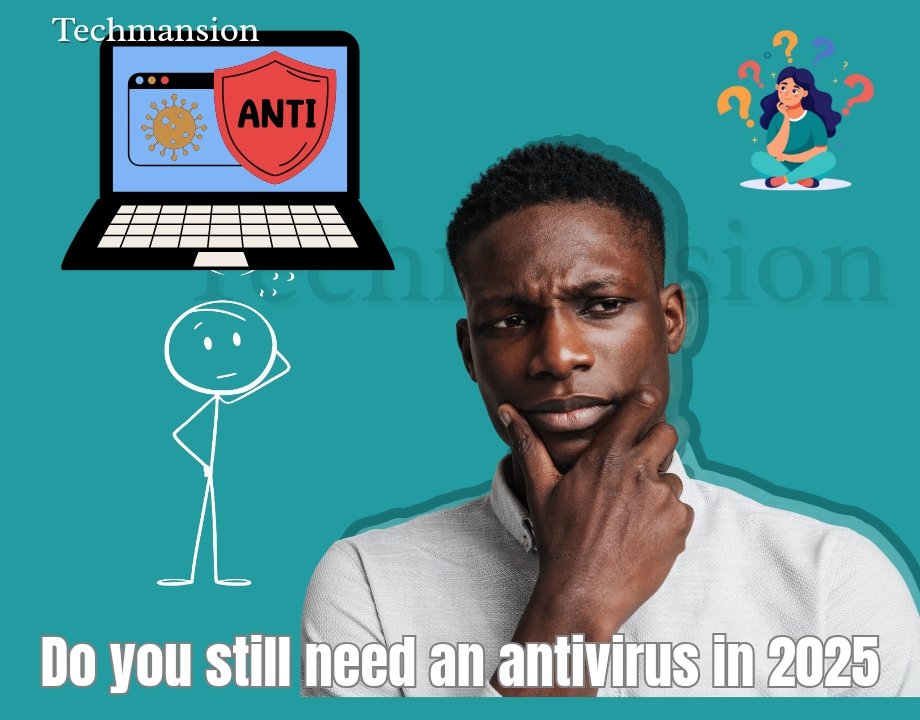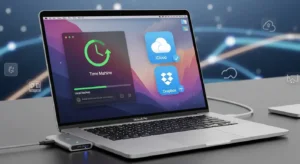Short answer up front: yes — but with nuance. You still need protection in 2025, although what “antivirus in 2025” means has changed. Below I’ll unpack why, who needs what, and exactly how to choose the right protections for your devices (phones, laptops, and company endpoints).
What changed since “old-school” antivirus
Ten years ago an antivirus was mostly a signature-based scanner that caught known viruses. Today threats are more varied (ransomware, banking Trojans, mobile banking malware, smishing, zero-click exploits, supply-chain abuse, AI-driven phishing) and attackers move faster. At the same time, operating systems got better: Windows ships Microsoft Defender with real-time protections and web-filtering, and macOS/iOS include increasingly capable runtime protections and app vetting. Microsoft Defender in particular is a serious baseline security layer on Windows 11 and Windows 10, with continuous signature and intelligence updates from Microsoft.
So the question isn’t “antivirus yes/no” — it’s “what mix of protections and behaviours do you need given the current threat landscape?”
The threat picture in 2025 (why worry)
Mobile attacks and advanced social engineering exploded by 2024- 2025. Various security companies reported drastic growth in Android-based malware, banking Trojans and smishing attacks — in one particular data set mobile malware cases even topped 100 per cent per annum. Both end-user and enterprise devices are targets: attackers follow the money and credentials. When you use mobile banking, save your passwords on your phone, or tap links in messages, you are directly in the spotlight.
An increase in mobile-first attacks and the necessity of mobile defenses is also sounded out by regulators and security agencies; threat reports in Europe and internationally in 2025 adopt the same direction. It implies that device security could not be an after-thought.
For everyday users: is built-in protection enough?
When your practices are safe – you update Windows/macOS, you use only apps that are offered in official app stores, you use unique passwords and MFA, and you never click on suspicious links – the default protection (Microsoft Defender on Windows; macOS/iOS built-ins) is an excellent place to start. SmartScreen blocking, cloud intelligence, and real-time scanning of defenders are able to intercept much of routine attacks. To a large number of casual users that is baseline and good hygiene.
That notwithstanding, there are two caveats:
- High-risk behaviour – When you torrent, when you execute frequent unknowns, when you click links within untrusted messages, third-party solutions provide effective additional layers (behavioral detection, exploit mitigation, web filtering).
- Mobile risk – phones (Android in particular) are experiencing an increase in targeted malware and smishing. An authorized mobile security application, which provides anti-phishing and app scanning, and SMS protection, can be an option. Threat reports issued by vendors of mobile devices reveal drastic growth in attacks and therefore phones are not safe by default.
For techies and privacy-conscious users
And in case you like to play with software, dual-boot, use VMs, or save sensitive data on a local drive, it is a witty idea to use a layered approach:
- Ensure that Defender (or macOS protection) is turned on as the initial line.
- Install a third-party AV / anti-malware, which is lightweight and is good at exploit prevention and malicious URL blocking (refer to independent test results).
- A valid password manager, 2FA hardware (security keys), and encryption of sensitive information should be used.
In the case of mobile, you need to install a trusted security application and should never side-load unnecessarily.
To the businesses and telecom/IT professionals.
Managed detection and Endpoint Detection and Response (EDR) are no longer a choice by organizations. Defender for Business / Defender for Endpoint is a typical enterprise base, although most organizations overlay customized EDR, network divisions, email safety gateways, and Zero Trust controls. Suppose that attackers will attempt social engineering, mobile vectors; Mobile-Threat Defense (MTD) and regular patching, asset inventory, and incident playbooks should be added.
Practical advice on buying (how to choose)
- Baseline: ensure that OS built-ins are on and up-to-date. They are efficient and low overhead.
- Add when necessary: third-party AV in case you are a high-risk customer or to control a large number of endpoints, or would require additional web/URL filtering and exploit coverage.
- Mobile: select the solutions that are ranked in recent mobile security tests that involve phishing, SMS, and app scanning.
- Do not use counterfeit antivirus programs in the applications stores; verify independent laboratory tests (AV-Comparatives, AV-TEST).
- People > tools: educate users on phishing, MFA, and patching and backups are enforced. Amplifiers are the tools, it is the user behaviour which is the real defence.
Conclusion
So: do you still need an antivirus in 2025? Yes — but think of “antivirus in 2025” as part of a layered security strategy rather than a single product. For many people, built-in protections + good habits suffice; for mobile users, power users, and organizations, additional tools (mobile security, third-party AV/EDR, MTD) are strongly recommended. Threats are evolving quickly, and the most effective defence blends updated software, smart defaults, and sensible user behavior. Stay patched, use MFA, back up your data, and pick defenses that match your risk — that’s the practical roadmap for staying safe in 2025.




